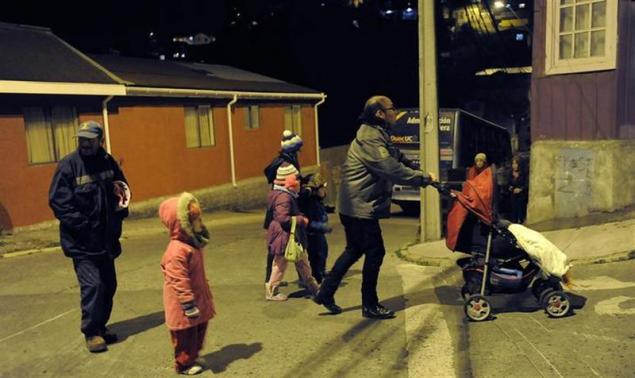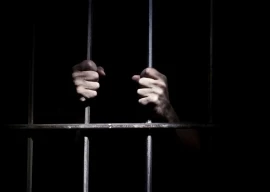
Officials said the dead included people who were crushed by collapsing walls or were killed by heart attacks.
The US Geological Survey said the quake was shallow at 20.1 km below the seabed and struck about 100 km northwest of the mining port of Iquique near the Peruvian border.
The government said it had no reports of significant damage to coastal areas, but around 300 prisoners took advantage of the confusion and escaped from a female penitentiary in Iquique, Interior Minister Rodrigo Penailillo said.
About 16 of the women were soon recaptured, Chile's investigative police said, while security forces fanned out through the area amid reports of power outages.
The Pacific Tsunami Warning Center said the quake generated a large tsunami with the biggest wave reported at 2.3 meters. The Chilean navy said the first big wave hit the coast within 45 minutes.
Iquique is a key copper exporting port, close to Chile's main copper mines. The area has been on high alert in recent weeks after an unusual number of tremors.
The government evacuated Chile's northern coast and a tsunami warning was issued for the Pacific coast of Mexico through Central and South America.
Chile is the world's No 1 copper producer but key mining firms said there was no serious damage to their operations. The tsunami alert in the country would however go on for at least another six hours, the government said late on Tuesday.
In 2010, an 8.8-magnitude quake triggered a tsunami that devastated several coastal towns in central-south Chile, a disaster that killed 526 people.
Chile's ONEMI emergency office said late on Tuesday that landslides were partially blocking some roads and highways.
State-owned miner Codelco reported no harm to its workers or mines, and said its operations in northern Chile were normal.
Chile's Collahuasi copper mine and port had no immediate problems following the quake, chief executive Jorge Gomez told Reuters, and mining company BHP Billiton said it had not received reports of damage.
"An earthquake of this size has the potential to generate a destructive tsunami that can strike coastlines near the epicenter within minutes and more distant coastlines within hours," the Pacific Tsunami Warning Center said.
"An evaluation of the Pacific wide tsunami threat is underway and there is a possibility that Hawaii could be elevated to a watch or warning status," it added.
Authorities in Peru started evacuating communities in the southern coastal region of Ica. Electricity was partially lost in the Peruvian cities of Tacna, Moquegua and Arequipa but there were no reports of deaths or serious damage there.
Tsunami advisory for Hawaii cancelled
Pacific Tsunami Warning Center has ended the Tsunami advisory warning for the state of Hawaii.
“The tsunami advisory is ended for the state of Hawaii effective at 7:25 AM HST,” read a notification of advisory body's website.
Tsunami Advisory Cancellation (Hawaii): to - civil defense in the state of hawaii subject - tsunami advisory can... http://t.co/4Z3nV4qHBI
— Earthquakes (@NewEarthquake) April 2, 2014
Earlier, a tsunami advisory was issued for Hawaii due to the earthquake, but no major damage is expected, US officials said.
"Based on all available data, a major tsunami is not expected to strike the state of Hawaii," the Pacific Tsunami Warning Center said in a statement.
"However, sea level changes and strong currents may occur along all coasts that could be a hazard to swimmers and boaters as well as to persons near the shore at beaches and in harbors and marinas."
The initial wave from the earthquake off the coast of Chile is expected to reach Hawaii at 3:24 am local time on Wednesday, the Pacific Tsunami Warning Center said.
COMMENTS (1)
Comments are moderated and generally will be posted if they are on-topic and not abusive.
For more information, please see our Comments FAQ

















Mother Earth is angry and frustrated. Non stop killings/ bombs / maimings / population growth have taken their toll on Her. Its Her way of revolting .